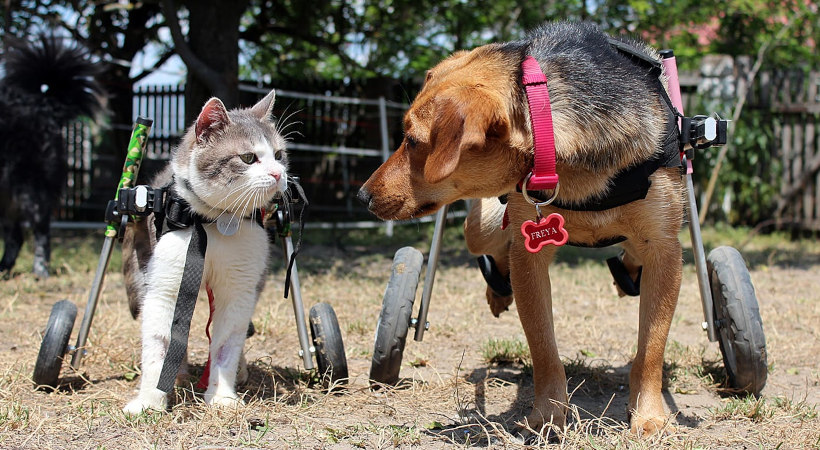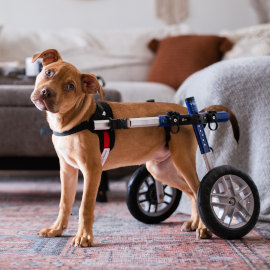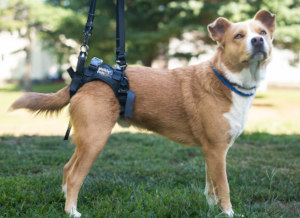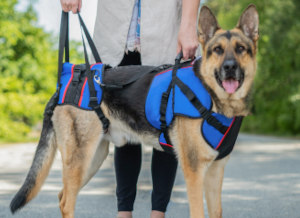- July 9, 2023
How to Treat Pet Asthma

When people think of their pets getting sick, they may imagine symptoms like vomiting or lethargy. Asthma likely isn’t the first thing they picture. However, every pet parent must learn about feline or canine asthma to distinguish it from allergies. You’ll know how to treat it and keep your pet healthy, no matter what ails them.
Ways Asthma Presents in Cats

Asthma is a condition that can affect people and animals. If you have it, your airways are more sensitive to airborne allergens or particles. When those particles reach your airways, the tissue becomes inflamed, producing excess mucus that makes it much harder to breathe. That’s when you’d use an inhaler to calm your airways and breathe regularly again.
Cats can experience the same thing. Although it’s not common, felines can develop asthma if they have a type 1 hypersensitivity reaction when aeroallergens reach their lungs. These allergens can include:
- Dust
- Animal dander
- Pollen
- Fungal spores
If a cat with asthma breathes any of these allergens, their inflamed lung tissue produces mucus that obstructs the airways. The cat won’t be able to inhale or exhale while the tissue remains irritated. It’s always a good idea to move your cat away from asthma triggers like smoke, perfume, outdoor allergens or other airborne triggers in the vicinity when an asthma attack begins.
A typical asthma attack in a cat may present the following symptoms:
- Heavy, rapid breaths that sound wheezy
- Slow movements or lethargy
- Panting with little to no sound
- Neck extension while squatting
- Blue gums or lips
- Wet coughing
The good news is asthma is a manageable condition. It shouldn’t decrease your cat’s life expectancy if you remove household aeroallergens and act quickly when asthma symptoms begin.
Cats having an allergic reaction to something in the air may have the following symptoms, which differ from an asthma attack:
- Sneezing
- Runny nose
- Watery, red eyes
- Wheezing
- Rashes on their skin
External symptoms are the primary things to look for when distinguishing your pet’s asthma from allergies. Allergies result in things like sneezing, which look more reminiscent of a head cold. Asthma will impair your pet’s breathing.
How to Treat Feline Asthma
First, it’s essential to rule out other causes of lung or throat irritation. There isn’t an official test to diagnose a cat with asthma, so your vet will need a detailed medical history. Describe your cat’s most recent potential asthma attack and details leading up to it, like your location and their activity.
Your vet may request chest radiographs or a Bronchoalveolar lavage to detect bronchitis virus particles. If the tests are negative, it’s more likely that your cat has asthma.
Following your vet’s instructions for treating an active feline asthma attack is essential. However, you can follow these general steps to make your cat more comfortable:
- Move them to a different location with cleaner air, either indoors or outdoors.
- Provide any prescribed medications like anti-inflammatory drugs to widen your cat’s air passage.
- Pet them to reassure them, as asthma attacks are frightening experiences for animals.
You can also note how often these attacks happen, what might trigger them and how long they last. Your vet will need the most accurate health history information to make a precise diagnosis and potentially provide your cat with an anti-inflammatory prescription.
Ways Asthma Presents in Dogs

Vets theorize cats are more likely to develop asthma than dogs because they spend more time outdoors, but there isn’t definitive research to prove that. Still, dogs can develop asthma, too. It depends on their genetic history and environmental triggers.
Canine asthma has the same symptoms as feline asthma. Both conditions impair the airways with factors such as:
- Wheezing, heavy breaths
- Lethargy or fatigue
- Quiet or silent panting
- Extending their neck for air
- Blue lips, tongue or gums
- Dense, wet coughing
The allergens can also be the same. Anything airborne and small enough to irritate lung tissue can trigger asthma, like perfumes, air fresheners, smoke and pollen.
You might notice more frequent asthma attacks with your dog as they age. Their lung tissue might become more sensitive, so you can always replace their fetching or walks with water aerobics or indoor treadmill time.
Dog owners also find asthma becomes more complicated to treat if their dog needs mobility assistance. Training them to use a wheelchair often requires outdoor space to guarantee enough room to practice walking straight and turning. If asthma symptoms reappear when your dog is outdoors, work with your vet to find an indoor space big enough for their health needs to accommodate your dog more effectively.
If your dog begins having an allergy attack, they’ll likely have the following symptoms:
- Sneezing
- Red, watery eyes
- Runny nose
- Contorting of the face due to continual sneezing
- Rashes across their belly
Even though sneezing may disrupt their breathing, your dog should be able to inhale and exhale without difficulty. It’s more likely an asthma attack when they can’t take a full breath and don’t have a runny nose or red eyes.
How to Treat Canine Asthma
Try coaxing your dog to a different environment when you think they’re having an asthma attack. It will get them away from whatever irritants are inflaming their lungs, like indoor pet dander or outdoor allergens.
If relocating doesn’t help your dog breathe, you can take them to an emergency veterinary clinic. A vet may administer respiratory medication to relax your dog’s bronchial muscles, a steroid to calm their inflamed tissue or an antihistamine.
Discuss the potential for getting your dog a prescription for one or more of these solutions. Having them at home could be the best way to help your dog if their asthma becomes frequent and disrupts their quality of life.
Help Your Pet With Their Asthma
You can easily distinguish your pet’s asthma from allergies by checking their overall symptoms. If they can’t breathe, it’s an asthma attack. Depending on the attack’s severity, your local veterinarian or emergency pet care clinic can assist with medications or steroids. Moderating your household’s air quality with long-term solutions like air filters or cleaners could be the next step in making your pet comfortable at home.
Guest Author:
Jack Shaw
Jack Shaw is a passionate freelance writer with a focus on promoting health and well-being. With a deep love for animals, he strives to bridge the gap between human wellness and animal care. His articles aim to inspire readers and their pets to lead healthier lives while fostering a compassionate connection with the world around them.

Tags
What do you think?
Related Articles

New Puppy Checklist: Gear You’ll Need for Your New Dog
Getting a new puppy is really exciting, but before you welcome them home, it’s important to prepare your space for them. Since puppies need a

How Big Do Mini Poodles Get? Vet Reviewed Average Weight & Growth Chart – Dogster
The information is current and up-to-date in accordance with the latest veterinarian research. Learn more » When you buy a Miniature Poodle, you might not

Can Police Dogs Smell Nicotine? Vet Verified Facts & Info – Dogster
The information is current and up-to-date in accordance with the latest veterinarian research. Learn more » While cigarette sales have been declining steadily for decades,

How Old Is 5 in Dog Years? Vet-Approved Guide to Each Size of Dog – Dogster
The information is current and up-to-date in accordance with the latest veterinarian research. Learn more » A common method for calculating a dog’s age is




